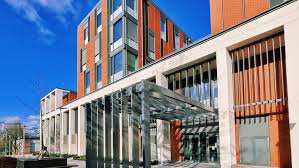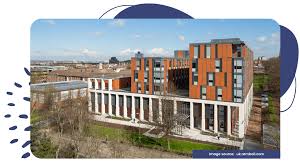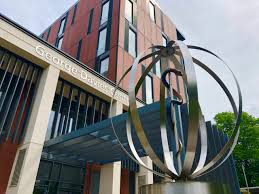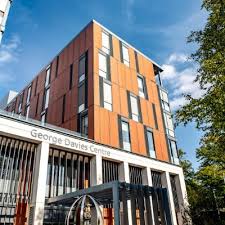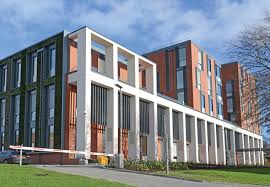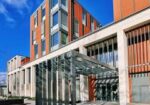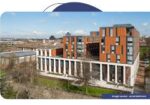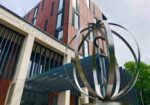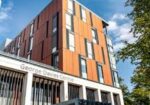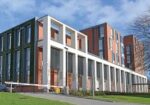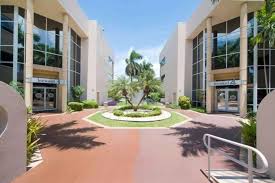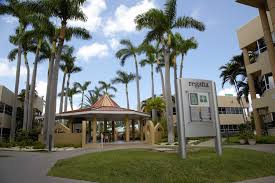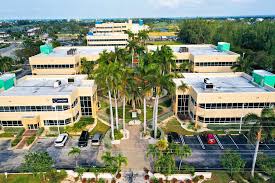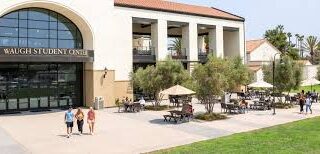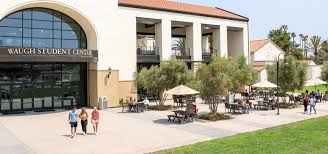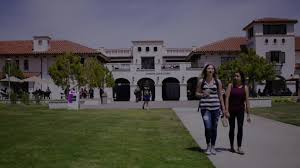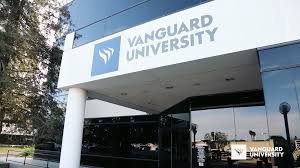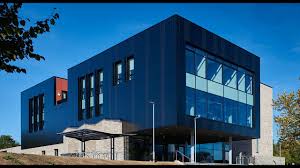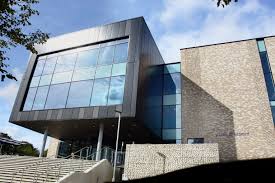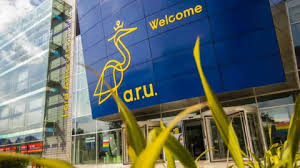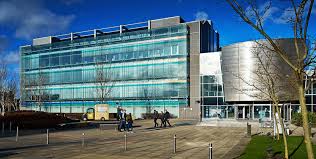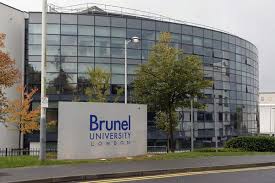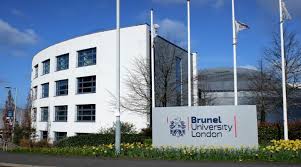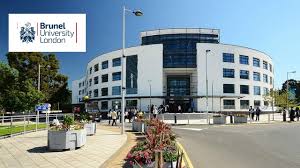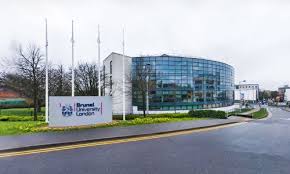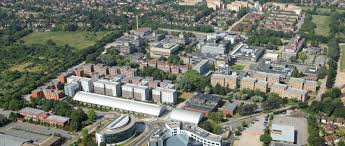Leicester Medical School, University of Leicester “Leicester Medical School at Leicester University” has a profound and purposeful history that reaches back to when it was originally established as Leicester, Leicestershire and Rutland University College in 1921.
About Leicester Medical School, University of Leicester
The University opened in land bequeathed to the city by businessman Thomas Fielding Johnson as a living memorial to the students and alumni of Leicester High School who died serving with the army and navy in World War I—in its motto Ut vitam habeant, meaning “so that they may have life.” Students studied for an external University of London degree and the college changed to University College, Leicester in 1927.
It gained full university status and its own degree-awarding powers in 1957 by a Royal Charter. The University became nationally renowned after capturing the inaugural University Challenge in 1963. Its small campus boasts a blend of 20th-century buildings, the oldest being from 1837.
Leicester Medical School, University of Leicester – Table of Contents
- About
- Advantages
- Ranking
- Departments And Course Duration
- Facilities And Infrastructure
- Required Documents
- Eligibility Criteria
- Admission Process
- Benefits
- Privileges And Benefits for Indian students
- FAQ’s
Key landmarks are the Fielding Johnson Building—the former Leicestershire and Rutland Lunatic Asylum, now used as administration offices and the Law School—coupled with the Astley Clarke Building and the Danielle Brown Sports Centre. It’s framed by the 1960s symbols such as the Engineering Building (architect Sir James Stirling), the Attenborough Tower, 18 stories high, where one of the last remnants of a UK paternoster may be found, and Charles Wilson Building.
There is also the Percy Gee Building of 1957 housing the Students’ Union and, since refurbishment in 2008 and royal reopening by Queen Elizabeth II, the centralised learning library is David Wilson Library. The George Davies Centre, finished in 2016, is now the center for medical research and education. In the past, the campus was also a WWI military hospital, and College House previously housed David and Richard Attenborough.
The University is also famous for pioneering research, such as the invention of genetic fingerprinting by Professor Sir Alec Jeffreys in the Adrian Building in 1984.
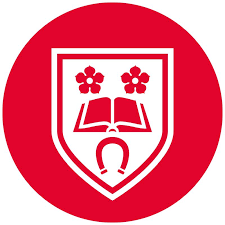
Advantages of Studying at Leicester Medical School, University of Leicester
-
Integrated and Patient-Focused Curriculum
-
-
- Early Clinical Exposure: Students begin interacting with real patients from Year 1, encouraging a strong patient-centered approach to medical education.
- Diverse Teaching Methods: A blend of lectures, small group tutorials, clinical skills sessions, and self-directed learning ensures a comprehensive academic experience.
- Practical Skill Development: Clinical skills are honed in a modern, state-of-the-art training unit.
-
-
World-Class Facilities
-
-
- Full-Body Dissection: One of the few UK medical schools to offer full-body cadaver dissection, enhancing anatomical understanding.
- Advanced Clinical Skills Unit: Equipped with the latest technology to support hands-on learning of medical procedures.
- iPad Integration: First-year students are provided with iPads for easy access to learning resources and digital materials, enhancing flexibility and engagement.
-
-
Diverse Clinical Placements
-
-
- Variety of Settings: Clinical experience spans across large hospitals, community clinics, and district healthcare centers, offering students broad exposure to different medical environments.
- Strong NHS Partnerships: Collaborations with local NHS trusts provide a wide network of clinical placements.
-
-
Exceptional Research Opportunities
-
-
- Research-Intensive Environment: The University is known for excellence in clinical research, offering students opportunities to engage in groundbreaking work.
- Intercalated Degrees: Students can opt for a year of research in an intercalated degree, either at Leicester or another institution.
- Elective Opportunities: Flexible elective placements allow students to explore various specialties, including international options.
-
-
Supportive Learning Environment
-
-
- Expert Faculty: Students are taught by highly experienced clinicians, researchers, and academics.
- Interactive Tutorials: Small group sessions promote discussion, collaboration, and critical thinking.
- Technology in Education: Digital tools, including iPads and other tech-based resources, are integrated into the curriculum to support learning.
-
-
Strong Career Prospects
-
-
- High Employability: Graduates have a strong track record of securing employment or progressing to further study within six months of graduation.
- Career Support Services: The Career Development Service offers personalized guidance and support for future planning and job applications.
-
-
Affordable and Accessible Education
-
-
- Cost-Effective Living: Leicester is known for its student-friendly cost of living, including affordable housing and amenities.
- Financial Support: Scholarships and bursaries are available to support students from a wide range of backgrounds.
-
-
Strategic Location and Cultural Diversity
-
- Central Location: Leicester’s location offers convenient transport links to major UK cities like London and Birmingham.
- Multicultural Environment: As one of the UK’s most diverse cities, Leicester provides a welcoming, inclusive atmosphere for students from around the world.
Latest Notifications:
Leicester Medical School, University of Leicester – Ranking
Leicester Medical School, under the University of Leicester, receives consistently high national and international league table rankings that mirror its success in clinical research and education. In the Times Higher Education World University Rankings 2024, the university is ranked 14th in the UK for Clinical and Health Sciences, and 2nd in the UK for world-leading clinical medicine research by the 2021 Research Excellence Framework (REF).
Internationally, the university stands at 191st in the Times Higher Education World University Rankings 2025, at 285th in the QS World University Rankings 2025, and at 217th according to the US News & World Report Global Universities in 2023. The University’s result in the REF 2021 also registered impressive progress with 30th position in the THE assessment of REF results, an improvement on its 2014 rank.
Leicester’s research influence is especially impressive, ranked number one in the UK in terms of influence in Archaeology and Biological Sciences, also ranking number one for research outputs in Clinical Medicine, Sports Science, and Sociology. These rankings speak well of Leicester Medical School’s commitment to academic rigor, research ingenuity, and international reach.
Departments And Course Duration in Leicester Medical School, University of Leicester
MBBS Program Overview – Leicester Medical School
The University of Leicester offers a Bachelor of Medicine and Bachelor of Surgery (MBChB) program, which is the UK equivalent of an MBBS degree. This program is comprehensive, integrated, and patient-centered, preparing students for clinical practice through a combination of academic knowledge and hands-on experience.
Departments and Areas of Study
Leicester Medical School is organized into various departments and thematic areas that span across both academic and clinical training.
-
Medical Sciences and Clinical Medicine
-
-
- Anatomy (with full-body dissection)
- Physiology
- Pathology
- Pharmacology
- Microbiology & Immunology
- Clinical Skills and Diagnostics
-
-
Primary Care and Public Health
-
-
- General Practice and Community Medicine
- Epidemiology
- Public Health and Health Promotion
-
-
Clinical Specialties
-
-
- Internal Medicine (Cardiology, Respiratory, Gastroenterology)
- Surgery (General Surgery, Orthopedics, Urology)
- Pediatrics and Child Health
- Obstetrics and Gynecology
- Psychiatry and Mental Health
- Emergency Medicine
-
-
Professionalism and Ethics
-
-
- Medical Law and Ethics
- Professional Development
- Communication and Teamwork
-
-
Research and Evidence-Based Medicine
-
- Students also have opportunities to undertake research through intercalated degrees or research projects embedded in the curriculum.
Teaching Methods
- Early patient contact from Year 1
- Integrated clinical placements in hospitals and community settings
- Problem-Based Learning (PBL)
- Simulation-based training
- Technology-enhanced learning with iPads
- Structured small group teaching and lectures
Upon successful completion of the program, students are awarded the degree of: Bachelor of Medicine and Bachelor of Surgery (MBChB)
which is equivalent to the MBBS and is recognized globally, including by the GMC (UK), ECFMG (USA), and other international medical councils.
Latest Updates:
Facilities And Infrastructure in Leicester Medical School, University of Leicester
College Infrastructure & Campus
- The George Davies Centre (opened in 2016) is the medical school’s primary hub. It is one of the UK’s largest and most advanced medical teaching facilities, with sustainable architecture, modern classrooms, and integrated simulation suites.
- The campus is compact and centrally located, adjacent to Victoria Park and close to Leicester city centre, providing easy access to resources and transport.
Technologies & Learning Resources
- Clinical Skills Unit (CSU): Features realistic simulation suites, high-tech mannequins, and tools for hands-on learning.
- Dissection Lab: One of the few UK medical schools offering full-body cadaver dissection, providing invaluable anatomy training.
- iPad Scheme: All first-year medical students receive free iPads, with access to digital textbooks, lectures, and clinical resources via integrated platforms.
- Smart Teaching Spaces: Lecture halls and tutorial rooms are equipped with interactive whiteboards, AV tools, and e-learning support systems.
Hostels & Accommodations
- The university offers a variety of on-campus and off-campus accommodations, including catered and self-catered options.
- Residences such as The Village and The City Living accommodation provide en-suite rooms, shared kitchens, Wi-Fi, and laundry services.
- Special accommodations are available for international students and students with medical conditions.
Library
- The David Wilson Library, opened by Queen Elizabeth II in 2008, is a state-of-the-art facility with:
- Over 1 million print and digital resources
- Dedicated medical collections
- 24/7 access during exam periods
- Silent study zones, group study rooms, and IT suites
Laboratories
- Modern teaching labs are located within the George Davies Centre and other science buildings.
- Labs are fully equipped for training in biomedical science, physiology, pathology, and pharmacology, ensuring a strong foundation for clinical years.
Canteen & Food Facilities
- Multiple cafés and food outlets are available on campus, including in the medical building.
- Choices range from healthy meals to international cuisine, vegetarian/vegan options, and grab-and-go items.
- Students also have access to kitchen facilities in accommodations for self-cooking.
Sports & Fitness
- The Danielle Brown Sports Centre offers:
- Gym and fitness studios
- Sports courts and facilities for football, basketball, and badminton
- Fitness classes and personal training sessions
- Students can also join a wide range of sports teams and intramural leagues.
Analytical Infrastructure
Leicester Medical School boasts world-class laboratory facilities that are pivotal in advancing the school’s research goals and long-term strategic priorities. Continued support and investment are essential to maintaining and expanding this cutting-edge infrastructure.
These labs have received significant funding from both the University of Leicester and external organizations such as NERC, the Royal Society, and the University’s Research and Enterprise Investment Fund (REIF). This has helped foster a dynamic research environment, supporting interdisciplinary studies, external collaborations, and high-value funding opportunities.
Facilities Include:
- Advanced Microscopy & Imaging: Features the UK’s only dedicated dental microwear texture analysis facility for reconstructing animal diets. The Centre also benefits from access to the Advanced Microscopy Facility, including a high-tech Zeiss Scanning Electron Microscope (SEM).
- Stable Isotope Laboratory: Equipped with state-of-the-art instruments for measuring both organic and inorganic materials, supporting environmental and biological research.
- Optically Stimulated Luminescence (OSL) Dating Laboratory: Used for precise dating of geological and archaeological materials.
- Taphonomy Laboratory: Facilitates experimental studies on the decomposition and preservation of animal remains and plastics.
- Micropalaeontology Laboratory: Specializes in the microscopic analysis of fossilized organisms.
- FTIR Spectroscopy Unit: Provides advanced tools for the chemical characterization of plastics, vital in environmental and biomedical research.
- ICP-MS and Laser Ablation Facilities: The Centre has strong collaborations with facilities using Inductively Coupled Plasma Mass Spectrometry (ICP-MS) and laser ablation techniques, enhancing capabilities in trace element and isotope analysis.
- International Ocean Drilling Program (IODP) Collaboration: A newly appointed post within the IODP office focuses on palaeoclimate research, aiming to expand the Centre’s global research output and academic impact.
Official site For Leicester Medical School, University of Leicester: Click Here
Required Documents For Admission in Leicester Medical School, University of Leicester
- Original Birth Certificate
- Copy of a valid passport
- NEET Scorecard
- CV (if required)
- Statement of Purpose
- Reference letter(s)
- Certificate of English proficiency test – IELTS/TOEFL/C1 Advanced
- Financial Documents as Proof of financial ability
- Academic transcription or proof of your previous academic
- Transfer certificate
- Photocopy of IELTS/UKCAT/BMAT scores
- A personal statement that illustrates why you’re coming to the UK.
Eligibility Criteria For Leicester Medical School, University of Leicester
- Pass 10+2 exam with PCB as main subject.
- Score at least 80-90% of marks in the 10+2 exam.
- Qualify NEET UG Exam.
- Clear UCAT & BMAT Medical Entrance Exam in the UK.
- Submit a certificate of IELTS or TOEFL.
- Migration certificate.
- Valid passport.
- Passports size photographs.
- Candidate VISA.
Admission Process – Leicester Medical School, University of Leicester
- Complete the Online Application
Begin by filling out the university’s official online application form through the University of Leicester website. - Prepare and Submit Required Documents
Print and sign your completed application. Submit it along with all required supporting documents (academic transcripts, personal statement, references). - Email Scanned Copies
Email scanned copies of all necessary documents to the admissions office with the subject line: “Application for Admission.” - Meet the Application Deadline
Ensure that all parts of your application, including documents, are submitted before the specified application deadline. - Application Review and Decision
The admissions team will review your application and documents. You will then receive a formal decision – either an offer of admission or a rejection. - Accept Offer and Pay Fees
If accepted, you will need to confirm your place by accepting the offer and paying the initial tuition deposit to receive the official acknowledgment or Confirmation of Acceptance for Studies (CAS). - Document Legalization (For International Students)
Complete the necessary legalization steps for your academic documents – including translation (if needed), apostille, and attestation. - Apply for Student Visa
After receiving the CAS, apply for a UK student visa. The university will provide an official Invitation Letter or CAS number to support your visa application process.
Get More Details About The Colleges in UK: Click Here
Benefits of Studying at Leicester Medical School, University of Leicester
Integrative and Patient-Focused Curriculum
Early patient exposure from Year 1 promotes an emphasis on clinical work.
Blends lectures, small group tutorials, and independent learning for a balanced method.
World-Class Facilities
One of only a few UK medical schools with full-body dissection on cadavers.
State-of-the-art Clinical Skills Unit for practice.
First-year students are issued iPads to aid in digital learning.
Wide Range of Clinical Experience
Clinical placements in local hospitals and community settings throughout the region.
Excellent partnerships with NHS Trusts ensure wide clinical exposure.
Excellent Research Opportunities
Host to innovative breakthroughs such as genetic fingerprinting.
Intercalated research degree or elective placements around the globe can be taken by students.
Friendly Academic Setting
Learn from renowned clinicians and researchers.
Small group tutorials encourage critical thinking and one-to-one attention.
Advanced learning technology adds to study experience.
Excellent Employability and Career Guidance
Excellent graduate employability figures.
Specialised Career Development Service to assist students in preparing for medical professions.
Low and Student-Friendly Cost of Living
Leicester is a lower-cost city when compared to most other cities within the UK.
Extensive range of student housing and affordable options.
Welcoming and Multicultural Society
Leicester is famous for its diversity, providing an energetic and international community for overseas students.
The city is centrally based with high-quality transport connections throughout the UK.
Privileges And Benefits for Indian students in Leicester Medical School, University of Leicester
Academic Excellence
- Early Clinical Exposure: Students engage with real patients from the first year, fostering a patient-centered approach to learning.
- Integrated Curriculum: The program combines lectures, small-group tutorials, clinical skills training, and self-directed study, providing a comprehensive medical education.
- State-of-the-Art Facilities: Access to advanced clinical skills units and full-body dissection labs enhances hands-on learning experiences.
University of Leicester Cultural and Community Support
- Diverse Student Body: Leicester’s multicultural environment ensures a welcoming atmosphere for Indian students, with various cultural societies and events.
- Support Services: Dedicated international student support services assist with academic guidance, visa processes, and cultural integration.
Strategic Location
- Central UK Location: Leicester’s central position offers convenient access to major cities like London, enhancing travel and networking opportunities.
- Affordable Living: Compared to other UK cities, Leicester offers a more affordable cost of living, making it financially viable for students.
FAQ’s
Is the Leicester MBBS degree recognized in India?
Yes, the MBBS degree from Leicester Medical School is recognized by the GMC (UK) and can be validated in India through NMC screening (FMGE/NExT) after fulfilling the required process.
Is accommodation available for international students?
Yes, the university offers various types of student accommodations (ensuite, shared flats, studios) with pricing starting from around £110–£180/week.
What facilities are available at Leicester Medical School?
Full-body dissection lab
- Advanced Clinical Skills Unit
- Simulation labs
- Modern library with online resources
- Sports complexes and extracurricular clubs
What extracurriculars are popular?
LeMedSoc (medical society with conferences, balls).
- Sports teams (cricket, football, badminton).
- Volunteering (homeless clinics, global health projects).
Is on-campus housing guaranteed?
Yes, for 1st-year international students (options like Nixon Court, Oadby Village).
How is the Indian food scene?
Excellent! The campus has Indian canteens; city has famous curry spots.
Also Check:
